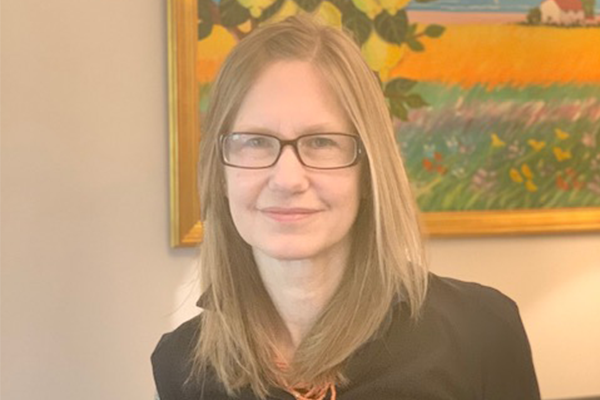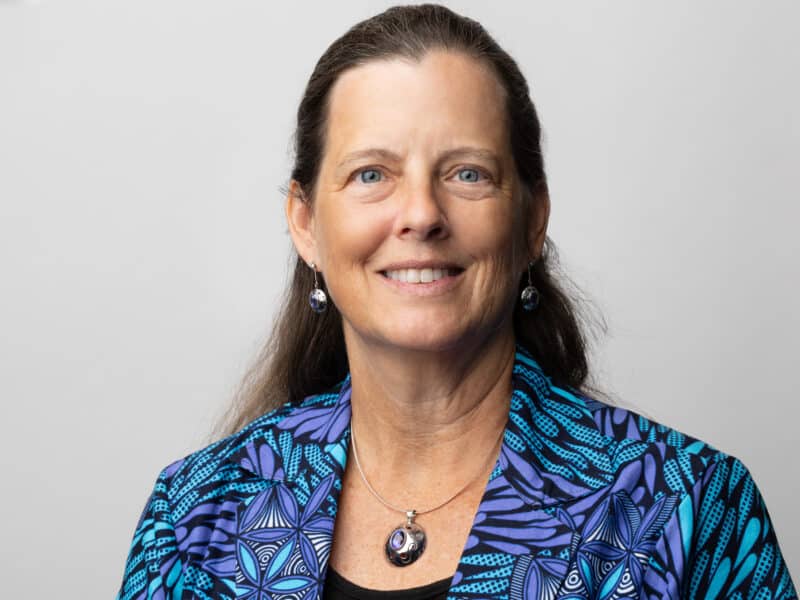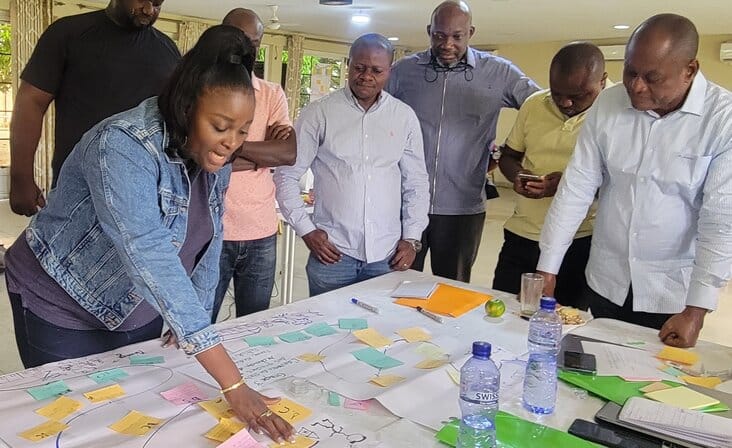Kathryn Bertram has been providing social and behavior change communication and advocacy support to public health emergencies, malaria, child survival and nutrition programs for the past decade. She provided support to teams in Liberia, Guinea and Sierra Leone during the 2013-2016 Ebola outbreak, conducting exploratory missions and contributing to social and behavior change communication assessments and recommendations. She currently works on a USAID project designed to ensure that the world is prepared for current and future pandemics.
CCP spoke with Bertram about COVID-19, communication and reaching out to communities around the world.
CCP: In a pandemic situation like the one we are facing now with COVID-19, how do we use communication to help people make the right decisions regarding their health and the health of others?
Bertram: Why people do what they do is extremely complex. Importantly, people don’t just consider the pros and cons to make a rational decision on the best path of action. Providing them with the right information seldom automatically translates to that logical choice. This is not to undercut the value of providing that critical information in emergencies but we just need to consider as well that simply providing messages alone is not going to be effective.
This is especially the case in an emergency. In an emergency, we need to understand that gap between what people know and what they actually do. We need to understand people’s perception of risk in an outbreak context to not only assess how susceptible they think they are of getting the disease — and people tend to perceive that the risk is greater for others than for themselves generally — but also their perceptions of how likely they are of transmitting the disease to others, and their level of concern for putting themselves and others at risk.
CCP: What is the role of stigma in disease spread?
Bertram: We need to understand whether or not a person feels stigma due to the disease. Stigma can lead people to not seek care or treatment or not comply with certain practices such as isolating the sick within households. We have seen how Asians and the Chinese have been stigmatized in communities that are seeing COVID-19 surges and refugee populations or foreigners can be labeled super spreaders which can cause escalating tensions.
Then we think, what are the social norms? What do we see other people actually doing and how accepted do we feel within that context? How accessible and trusted are the health services? What impact would COVID-19 have on these systems and how would that be reflected in our own behaviors? What can we feasibly do?
CCP: How might our beloved cultural and religious rituals contribute to the spread of COVID-19?
Bertram: In times of emergencies and stress, people tend to hold on to cultural and religious traditions and rituals even more. But some of these cultural and religious practices can accelerate transmission of the disease. In the United States, for example two dozen deaths have been linked to a single funeral in rural Georgia.
A lot of countries have already ceased religious gatherings because they’ve led to some big increases in cases. Religious leaders are hugely influential in many areas. So how can we leverage them for behavior change? Some messages have been incorporated, for example, in Friday prayer calls over loudspeakers.
CCP: We should obviously be concerned about the risks associated with this coronavirus, but how do we keep that from turning into panic?
Bertram: What we don’t want to do is to incite fear. So, with trusted role models and influential leaders we can consider emphasizing social responsibility as well and the ability of people to do something positive for their families, for their neighbors and their communities and the likely negative consequences of non-compliance. When you believe you have little control over an event, especially one that tends to be more fatal and sudden, your perceptions of threat and corresponding fear will likely increase. It is important for people to regain a sense of control. Giving them practical, doable steps they can take to protect themselves, their families, and communities, while believing in the benefits of those actions, can increase their confidence to control the danger.
During the very early stages of the 2013-2016 Ebola outbreak — something that we definitely don’t want to repeat again — social behavior change, risk communication and community engagement were not as prioritized. What we had happening was that response organizations were trying to increase that level of threat so that people would take preventative actions. But what they were doing was putting out messages that were mostly increasing the fear. Putting out messages around how Ebola kills, there’s no cure, there’s no treatment, there’s no vaccine. What you had was a lot of people hiding, not wanting to go to the Ebola treatment centers and that was really leading to an increased level of transmission and deaths. We needed to tell people some of the preventive actions they could take and how they could feel more in control of the situation.
CCP: How do we communicate with the people who need information when, because of social distancing, we can’t go out and talk to people in communities like we usually do?
Bertram: We’re not having the same type of group community dialogues that we have done in the past. We need to think a little bit more innovatively about how we can use more interactive community radio, mobile platforms, other ways of engagement that won’t put us at risk and that won’t put our beneficiaries at risk. At the same time, people are also highly adaptive, and so it’s important to understand how people are adapting to social distancing measures and what communication channels they are using to stay in touch and informed, and how they are using them. Communities must be at the heart of any public health intervention, especially in emergencies and that should not change.
It’s important to engage during and after the pandemic. We can collect community concerns in all different types of ways, using mobile phones, using surveys and so on, but this will be really important to do consistently so that we make sure that we understand what people are listening to, what rumors they’re listening to, what their concerns are, what their perceptions are and adapt accordingly.
Even in this time where we’re practicing social distancing, we should still be thinking about a participatory approach. We need to be inclusive so that we’re reaching those marginalized and vulnerable populations. We need to ensure that our response is localized and it’s adaptable to the local context and, importantly, that we’re building on that local capacity.
When we are disseminating messages to communities about social distancing, isolating the sick at home and hand hygiene, for example, consider those communities with overcrowded housing and large families, with inadequate or limited access to health facilities and inadequate access to soap and water. There’s resistance to stay home from work if it means loss of needed pay and there are social norms related to communal eating and religious practices of communal prayer.
Potentially there can be higher transmissibility due to those larger household sizes, due to the intense social mixing between the young and elderly overcrowding in urban slums and displaced people’s camps, inadequate water and sanitation, a recent modeling study shows. In these low-income settings or areas of humanitarian crises, people may not have adequate treatment for their underlying diseases like hypertension, diabetes, TB, HIV and so on. Potentially there could be a higher case fatality due to a lack of intensive care capacity, especially outside large cities and then considering the disrupted care for health problems other than COVID-19.
CCP: Who are the trusted voices people need to hear from at this time?
Bertram: The WHO and partners are discussing the need to start identifying those transmission pathways at the household level, at the community level, and then map how key influencers can play a role at various points. Who are those trusted influencers who can engage: youth leaders, spiritual or traditional cultural leaders, community groups, women’s groups educational networks and so on? Identifying who those trusted networks and influencers are will be really critical and we all have those networks.
CCP: Can we consider using nudges or other out-of-the box approaches?
Bertram: Agencies have been getting creative with the use of nudges — or as defined in behavioral economics terms, a “choice architecture to alter behavior in a predictable way without forbidding options”— to get people to comply with social distancing, hand hygiene and other mitigation measures.
We can we think innovatively around changing behaviors, not only at the community level but also the health post level, with structural innovations. Maybe demarcate an area within a home or within a camp-like setting, using chalk or using paint so that you can create a little barrier between the rest of the family and someone who may be sick with COVID-19. Using paint to demarcate the one-to-two-meter physical distancing measure in areas where people buy food — for example, outdoor food stalls — is already being used in one country.
Can we consider nudges for hand-washing in camps, such as was done about five years ago for schools in Bangladesh? There was an intervention around constructing handwashing stations with soap near latrines. The use of those handwashing stations increased 18 percent after they were put next to the latrines. But after footpaths were put in place connecting the latrines to the handwashing stations, 58 percent of children washed hands after leaving that latrine and then another nudge was put in with footprints and hand prints, increasing usage to 68 percent. Two weeks after the intervention, 74 percent were washing hands with soap and water. Can we consider the addition of nudges to encourage health workers to comply with safety measures where perceived risk of infection from COVID-19 is low? This is just another tool in our toolbox to think about to help increase compliance to mitigation protocols.





